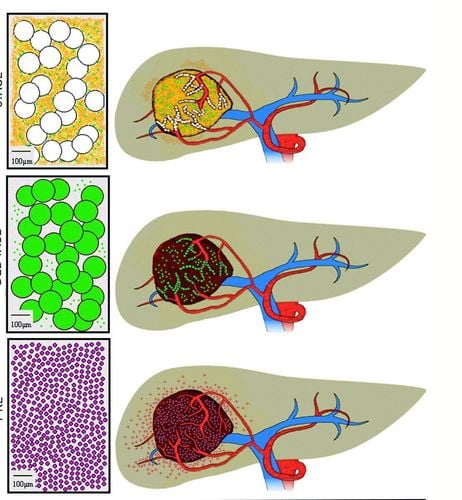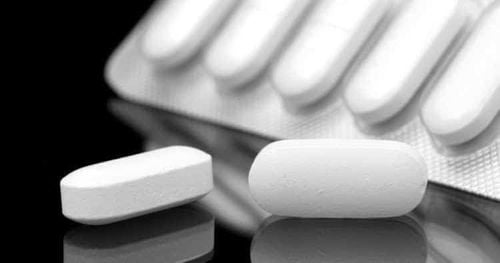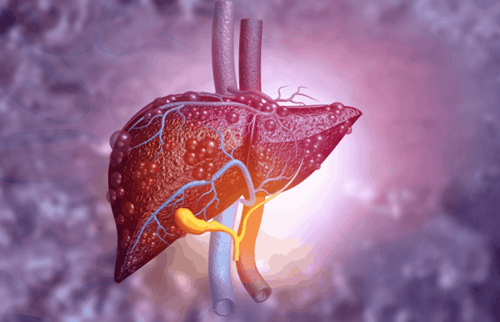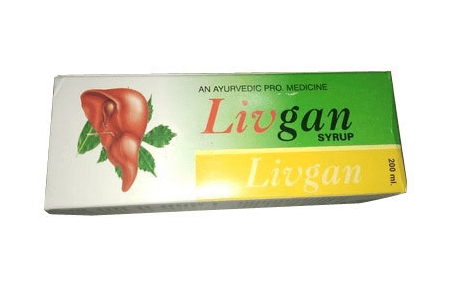This is an automatically translated article.
The article is expertly consulted by Master, Resident, Specialist I Trinh Le Hong Minh - Radiologist - Radiology Department - Vinmec Central Park International General Hospital.Hepatic angiography is a technique that allows the doctor to see the visceral arteries, the common, separate, left, and right hepatic arteries, and the branches of the arteries in the liver. Digital imaging technique to erase the hepatic artery background helps diagnose many liver-related diseases.
1. What is background removal digitization technique?
Digital Subtraction Angiography (DSA) is a system that allows angiography using X-rays. Its purpose is to study the blood vessels in the body, to see more clearly the lesions and diseases in the blood vessels. From there, the doctor can prescribe vascular intervention methods.This imaging method is a combination of X-ray and digital use to remove the background on the images obtained before and after contrast injection for the patient. As a result, we can obtain a full image of the arteries of the liver, heart, lungs or brain... This is the product of Seldinger angiography and computerized image processing techniques.
2. Working principle of background erasing digital capture technique
This technique has a fairly simple principle that is to use fluorescent light and X-rays to take pictures of blood vessels at the site to be examined. The images before and after the contrast injection are digitally processed to remove the background and contrast-enhanced structures such as bone and leave only the arteries on the image.Components of the digitized background removal system include:
X-ray generator, image receiver, image processing unit, display unit. The end result is a clear image of how the artery at the site of interest is displayed on the screen.
3. Digital scan to erase the hepatic artery background
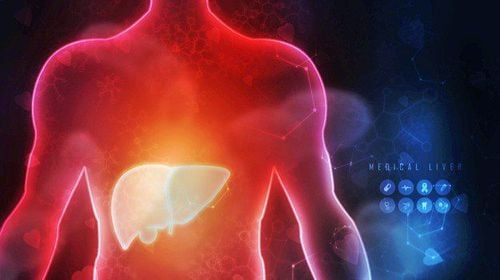
3.1 Indications Digital background erasing imaging technique is indicated for the following cases:
Assessment of blood supply in the presence of a liver tumor Suspected vascular malformation Pathology of liver injury, suspected vascular injury, Blood vessel bleeding Suspected vascular injury Angiography in preparation for liver transplantation Angiography for interventional radiology. 3.2 Contraindications Digital angiography to erase the hepatic artery background has no absolute contraindications. Relative contraindications in the presence of coagulopathy, in patients with renal failure, in pregnant women and in those with a history of allergy to iodinated contrast agents.
3.3 Procedure 3.3.1 Anesthesia Method Before performing the technique, the patient will be placed intravenous line and local anesthetic. For children under 5 years of age who are not yet cooperative or agitated, scared or similar, additional premedication may be required.
3.3.2 Choosing the technique of use and route of catheterization Using the Seldinger technique, the catheter can be entered through the femoral artery, brachial artery, axillary artery or radial artery. The most common is the femoral artery, if this access cannot be used, another must be used.
3.3.3 Hepatic angiography To angiogram of the liver, the doctor will perform the following actions:
Disinfect, anesthetize the puncture site Insert the catheter into the aorta at the level of the D12-L1 thoracic vertebrae. . Then rotate the catheter anteriorly and hook into the visceral artery. Catheters can be placed here, or the common or separate hepatic artery can be selected and contrast is injected. The volume and concentration of drug injected depends on the position of the tube, the concentration can be from 10 to 12 ml at a rate of about 4 - 5 ml/s with a pressure of 500PSI. If the portal vein needs to be studied, then the superior mesenteric artery should be taken. The radiograph will focus on the liver, taking the arterial phases as well as the parenchyma and veins in the liver. After obtaining the required imaging results, the doctor will remove the catheter as well as the tube into the artery. At this time, it is necessary to apply direct pressure by hand on the puncture site for about 15 minutes to stop the bleeding. Then apply pressure to the patient for 6 hours or can use a vascular closure device. 3.3.4 Comment on the results The obtained images will clearly show the anatomical structures of the hepatic artery, the visceral artery and the common, separate, left, and right hepatic arteries and related branches such as the gastric artery left, splenic artery, and gastroduodenal artery. From there, it is possible to detect liver artery damage, if any.
3.4 Complications and how to handle them
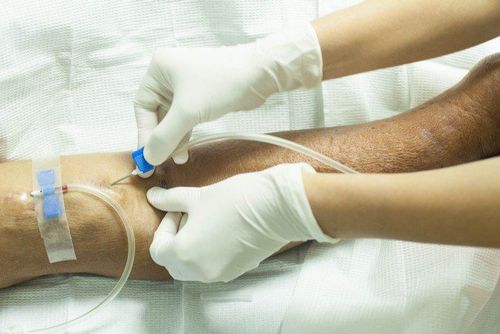
In case the catheter is broken, the lead inside the vessel: It is necessary to immediately remove the foreign body through endovascular intervention or surgery.
If vasospasm occurs, it is necessary to wait 10-15 minutes to monitor and re-evaluate or give the patient antispasmodic drugs.
In the case of suspected arterial occlusion due to blood clots or embolism due to atheroma (rare) it is necessary to promptly examine and treat by a specialist.
If the cause is contrast-enhanced, the doctor needs to review the diagnostic and treatment procedures for contrast-induced complications.
3.4.2 After the procedure After the procedure is completed, the patient may experience some complications such as bleeding or hematoma at the catheter site, need to bandage the bleeding site and lie motionless until the bleeding stops.
If swelling or arteriovenous fistula (rare) is present, it can be managed by surgical intervention.
In case the patient shows signs of infection after the procedure, the doctor needs to prescribe antibiotics for treatment.
Digital tomography to remove the arterial background is a very useful technique in angiography of the liver and other parts such as the brain, marrow, lungs... effectively supporting doctors in the examination and treatment of diseases. .
Any questions that need to be answered by a specialist doctor as well as if you have a need for examination and treatment at Vinmec International General Hospital, please book an appointment on the website to be served.
Please dial HOTLINE for more information or register for an appointment HERE. Download MyVinmec app to make appointments faster and to manage your bookings easily.
SEE MOREProcess of computed tomography in the hepatic artery chemotherapy node Portal vein thrombosis in liver cancer Learn the method of embolization for liver cancer (TACE) at Vinmec





